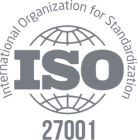The modern office is more than just a workspace; it's a goldmine of data. Each day, your meeting rooms, desks, and corridors generate vast amounts of information. This data is crucial for boosting productivity, improving resource management, enhancing the employee experience, and fostering a sustainable business model. Specifically, meeting rooms—a focal point for collaboration and decision-making—are rich with untapped insights. The key to unlocking these valuable insights lies in meeting room analytics. So, join us as we explore how data-driven strategies can optimize our workspaces.
TL;DR:
- Modern offices are data goldmines that can significantly enhance productivity and resource management through the data they generate daily.
- Meeting room analytics provide insights into space utilization, identifying underused areas and peak usage times, which help in better space management.
- By optimizing the use of office space and resources, meeting room analytics reduce costs associated with underused or improperly allocated areas.
- Analytics tailor meeting spaces to employee needs, enhancing user satisfaction and boosting overall productivity.
- Data-driven decision-making enabled by meeting room analytics enhances meeting effectiveness and optimizes office layout according to actual usage.
- Advanced technology such as AI and machine learning is integrated to refine scheduling and resource allocation, making office operations more efficient.
- Meeting room analytics support environmentally responsible management, contributing to sustainability initiatives within the office.
- Overall, meeting room analytics improve decision-making, foster a positive corporate culture, and promote sustainable growth, enhancing both the workplace and business outcomes.
What Are Meeting Room Analytics?
Meeting room analytics (or conference room analytics) are data-driven insights gathered from meeting spaces within an organization. These analytics help businesses understand how their meeting rooms are utilized, answering questions such as:
- Which meeting rooms are most frequently used?
- What are the peak times for meeting room usage?
- How often are rooms booked but remain unused?
- What is the average duration of meetings in each room?
- Are larger rooms being underutilized?
- Are smaller rooms frequently overcrowded?
- How does actual room usage compare to scheduled bookings?
By analyzing this data, companies can optimize their space usage, reduce operational costs, and enhance meeting effectiveness. This process not only improves resource management but also supports the planning and allocation of spaces in a way that aligns with the organization's actual needs, leading to more efficient and productive work environments.
Examples of Meeting Room Analytics
Here are some common types of meeting room analytics that can provide valuable insights into workspace utilization:
- Occupancy Rates: Identifying the percentage occupancy for each room gives insights into their utilization levels, showing how effectively the available spaces are being used.
- Peak Usage Times: Discovering when your rooms are most frequently used helps in proper scheduling and resource allocation, ensuring that spaces are available during high-demand periods.
- No-Show Metrics: This metric highlights the frequency of booked unused rooms due to last-minute cancellations or no-shows, which can inform policies to maximize room usage.
- Duration of Use: Analyzing how long rooms are used can help in understanding meeting efficiency and may indicate the need for adjustments in booking time slots.
- Frequency of Use: Tracking how often certain rooms are booked compared to others can indicate preferences or underutilization, guiding future room enhancements or changes.
- Equipment Usage: Monitoring which rooms have equipment used most frequently can help in planning for technology upgrades or redistributing resources to meet user demand.
How Do Meeting Room Analytics Work?
Meeting room analytics function by collecting and analyzing data from various sources within the office environment. Sensors placed in meeting rooms can track real-time occupancy, monitor room usage, and detect the presence of individuals, even if a room was booked but not used. Additionally, integration with calendar and conference room booking software allows for analyzing scheduled versus actual room usage, providing insights into no-show rates and meeting durations.
Advanced software tools then aggregate this data, applying algorithms to identify trends and patterns. This process enables businesses to generate comprehensive reports illustrating usage statistics, highlighting inefficiencies, and suggesting actionable changes.
By understanding these metrics, organizations can make data-driven decisions to optimize their meeting spaces, ensuring they are used efficiently to meet the workforce's needs.
The Importance of Analytics in Modern Meeting Spaces
Meeting room analytics are becoming increasingly vital in today's office environment. With the changing landscape of workspaces, a shift towards hybrid work models, and demand for more flexible arrangements, efficient management of meeting spaces has never been so essential.
Global Shift and Its Impact on Workspaces
A recent study revealed that 73% of workers desire sustained flexibility, including options for remote work and adaptable meeting environments. This highlights the importance of understanding how meeting rooms are used within an organization, especially as teams increasingly seek spaces that can support various working styles and collaborative needs. By leveraging meeting room analytics, companies can ensure their meeting spaces are efficient and conducive to the flexible work models that employees now expect, thereby reassuring them that their needs are being met.
Data-Driven Decision-Making
Meeting room analytics can offer invaluable insights, such as which rooms are most frequently used, at what times, and by how many people. Harnessing this data allows businesses to tailor their space to employees' actual needs rather than assumptions or traditional norms. It empowers organizations not only with better decision-making capabilities but also with enhanced spatial efficiency.
With as many as 66% of businesses intending to revamp their office layouts to suit the new parameters of mixed work environments, incorporating analytics is no longer a choice; it's a necessity.
Analytics: A Contributing Factor for Success
Workplace analytics extend beyond simple logistics to significantly impact overall business success. High-quality meeting facilities enhance collaboration, boosting team productivity and morale. Conversely, underutilized or poorly equipped spaces can create frustration among staff, leading to dissatisfaction and negatively impacting the entire organization's performance.
Thus, meeting room analytics are essential for managing physical resources, fostering a positive corporate culture, and promoting sustainable growth. By leveraging these insights, companies can ensure their work environments are effective and conducive to employee well-being, driving forward the business's success.
5 Ways Meeting Room Analytics Optimize Today's Office
Let’s explore five concrete ways these meeting room analytics can deliver value in today’s office setting.
Identifying Underutilized Spaces and Peak Usage Times
Meeting room analytics significantly enhance office efficiency by accurately identifying underutilized spaces and peak usage times. For instance, data might show that specific conference rooms are consistently vacant on Friday afternoons or that small huddle spaces are in high demand during weekday mid-morning hours.
With these insights, organizations can make informed decisions about space management—such as converting rarely used large rooms into several smaller meeting areas to accommodate the demand for more frequent but shorter meetings. Alternatively, companies might adjust their room reservation system to prioritize access during peak times or incentivize off-peak usage with lower booking rates.
This strategic application of meeting room analytics optimizes the use of valuable office real estate, promotes a smoother workflow, and enhances productivity by aligning space availability with actual employee needs.
Optimizing Room Bookings and Layout for Efficiency
Optimizing room bookings and layout is another crucial way meeting room analytics can benefit today's office environments. With the average cost of an hour-long meeting ranging between $30 and $250, companies need to use their meeting spaces judiciously.
By using meeting room analytics, companies can optimize bookings by aligning room availability with actual demand patterns. For example, analytics might show that larger conference rooms are mostly needed during quarterly reviews or client presentations, suggesting a need to reserve these spaces specifically for such events. Meanwhile, smaller rooms can be allocated for regular team meetings, reducing overhead costs.
Additionally, adapting room layouts with modular furniture or technology-equipped stations based on usage statistics ensures that each space is suited to its most frequent functions. This strategic adaptation reduces unnecessary expenditures on underused large spaces and maximizes the productivity and effectiveness of every meeting held.

Enhancing Employee and Visitor Experience Through Analytics
Meeting room analytics also play a crucial role in enhancing the employee and visitor experience by ensuring that meeting spaces meet their specific needs and expectations. For instance, analytics can reveal preferences for certain types of rooms—such as those with advanced AV capabilities for client presentations or quiet spaces for confidential discussions. This data enables companies to tailor their meeting environments accordingly, ensuring each room has the appropriate technology and comfort features.
Additionally, organizations can streamline the booking process by understanding peak usage patterns and room demand, reducing wait times and preventing the frustration of not finding available spaces. This thoughtful application of analytics improves employee satisfaction and productivity and leaves a positive impression on visitors, reflecting a well-organized, responsive, and technologically adept business environment.
Increasing Workplace Productivity with Meeting Room Data
Increasing workplace productivity is a critical benefit of utilizing meeting room data effectively. Organizations can make targeted improvements to their meeting environments by analyzing specific metrics. For example:
- Utilization Rates: Data on how frequently each meeting room is used can help companies identify which spaces are over or under-booked. Adjusting the availability of these rooms or repurposing seldom-used spaces can help match actual demand and increase overall productivity.
- Meeting Duration: Tracking the average length of meetings can indicate whether rooms are tied up unnecessarily. Shortening allowed booking times based on actual usage can reduce the idle time between meetings and increase the availability of meeting spaces.
- No-Show Rates: Monitoring how often booked rooms go unused due to no-shows can lead to implementing stricter cancellation policies or reminder systems. This ensures that meeting spaces are not wasted and available for others to use, optimizing resource allocation.
- Technology Usage: Analyzing which technological tools (like video conferencing or interactive whiteboards) are used most can guide investments in the right technologies. Equipping rooms with the preferred tech can speed up meeting setups and enhance the meeting experience, thus boosting productivity.
How might your organization benefit from implementing these analytics?
Driving Better Decision Making in Facility Management
Meeting room analytics are revolutionizing facility management by enabling smarter, data-driven decision-making. This technology gives facility managers precise workplace data, helping them make informed choices. Here are a few practical examples:
- Resource Allocation: Shifting resources to frequently used rooms to ensure they are well-equipped and maintained.
- Energy Savings: Adjusting lighting and HVAC settings based on room usage data to reduce energy consumption in less-used areas.
- Furniture Investment: Investing in ergonomic or technology-enhanced furniture for high engagement and usage spaces.
- Space Optimization: Converting seldom-used large meeting rooms into multiple smaller meeting spaces or flexible work areas.
- Technology Upgrades: Prioritizing upgrades in technology like smart boards and connectivity solutions in rooms that host critical meetings.

The Role of Technology in Gathering Meeting Room Analytics
Technology is crucial in collecting valuable meeting room data in today's digital era. This typically involves integrating various digital tools and platforms that efficiently capture, compile, and visualize essential information. Increasingly, we are seeing the development of comprehensive workplace experience software. These all-in-one solutions manage every aspect of the workplace experience—from booking desks and meeting rooms to planning hybrid work schedules—enhanced by robust analytical features.
The Yarooms Workplace Experience Platform is an excellent example of this type of tool. It streamlines workplace operations and equips you with precise meeting room analytics to optimize office spaces effectively. The platform offers insights into metrics such as average space utilization, no-shows, and booking volumes. Additionally, it features a heat map that allows location managers to visualize real-time utilization within the office. This information can be pivotal in adjusting room booking processes, such as setting specific meeting intervals, defining booking windows, and customizing room capacities and available amenities. By providing these detailed analytics, Yarooms helps create a workplace that genuinely caters to the needs of its users, making it a smarter, more efficient environment.
Best Practices for Implementing Meeting Room Analytics Solutions
Adopting meeting room analytics solutions effectively requires careful planning and smart execution. Here are some best practices to consider:
- Audit Existing Conditions: Before introducing any new system, understand your existing workspace layout, such as how it is currently used, when peak usage times occur, what types of meetings usually happen, etc.
- Set Clear Goals: Understand the key objectives you want to achieve through these analytics solutions. It could be increasing room utilization rates, enhancing employee satisfaction, or streamlining facility management processes.
- Choose the Right Technology: Not all analytic tools are created equal. Look for customizable solutions that align with your company's needs.
- Communicate Changes Effectively: Inform your staff about these new implementations, ensuring they understand their benefits and how they will transform their work environment.
Following these steps can help ensure the effective deployment of your chosen solution.
How to Overcome Common Obstacles in Deploying Analytics Solutions
Despite the compelling benefits, deploying meeting room analytics solutions can be challenging. Fortunately, strategic planning can often circumvent these obstacles:
- Network Compatibility Issues: Align your chosen technology with your existing network setup for smooth integration. Working closely with IT professionals can help sort out any compatibility issues.
- User Resistance: Changes, especially involving technology, may face employee resistance. Convert skeptics by clearly communicating the purpose and advantages of the new system. Use training to improve their familiarity and comfort level with the tool.
- Reliability Concerns: Quality service providers offer robust solutions that address concerns about system crashes or data breaches. Go for trusted brands in the industry to ensure reliability and security.
Innovations Shaping the Future of Meeting Room Analytics
The domain of meeting room analytics isn't static. Instead, it continuously transforms due to technological innovations pushing its capabilities further. Thanks to advancements in fields such as Artificial Intelligence (AI), Machine Learning (ML), predictive analysis, and even workplace sustainability initiatives, the horizons are expanding beyond simple data collection and analysis.
The Impact of AI and Machine Learning on Conference Analytics
When you think about AI and ML, envision them harnessing heaps of raw data from meeting rooms – attendance figures, duration, frequency – and converting them into discernible patterns. This application can drastically revolutionize how businesses perceive their workspace utility. An AI-powered conference analytics platform could dynamically adjust schedules based on team or project needs while considering the optimal room size.
Moreover, ML algorithms can study trends across multiple office locations over time. Consequently, they generate accurate forecasts concerning future usage patterns. As a popular saying goes - "Data is like garbage. You had better know what you will do with it before you collect it." Indeed! In this case, clean, unadulterated data feeds AI systems that predict potential bottlenecks and recommend proactive measures.
Predictive Analysis for Future Workspace Planning
Let's delve deeper into the potential of predictive analysis for modern offices built around collaborative spaces. When fed enough data over time, an intelligent analytics system can accurately forecast specific metrics like peak meeting times or most utilized spaces.
Such insights facilitate informed decisions catering to these demands ahead of time. For instance, foreseeing peak usage periods empowers organizations to design meeting schedules more efficiently, eradicating clashes or idle rooms during rush hours.
Predictive models also assist in anticipating future spatial requirements as the company grows or responds to changes in workforce dynamics, such as flexible working conditions or remote employment growth—a truly instrumental tool in today's versatile office!

The Role of Sustainability in Space Planning
Incorporating sustainability criteria in your meeting room analytics has far-reaching implications for the environment and business performance. Underutilized spaces represent wasted real estate expenditures and unnecessary energy consumption - an additional cost incurred that could otherwise be mitigated.
Modern meeting room analytics solutions offer carbon footprint metrics based on space utilization, helping identify opportunities to reduce waste and save costs while contributing positively towards climate goals.Moreover, sustainable workplace practices can significantly enhance employee satisfaction and brand reputation, driving successful business results.
In the long run, it's worth remembering that data science is valuable with clean data. The same applies to our offices: without clean and efficient use of our workspaces, all efforts to perfect them would come to naught.
Wrapping Up: Reimagining Meeting Rooms with Data-Driven Insights
Successful ventures, from business projects to office management, rely on accurate and timely data—especially crucial in today's digital age. Meeting room analytics provide essential insights that help redefine the use of shared spaces, making them indispensable for modern offices focused on efficiency and productivity. This data aids in making informed decisions, reducing waste, and enhancing workplace management.
Innovations like AI and machine learning are integrating into conference analytics, making predictions more accurate and tailored to actual needs rather than assumptions. This tech-driven approach supports sustainability by managing resources more responsibly and improves individual employee experiences by streamlining booking processes and creating comfortable, personalized spaces.
Meeting room data offer both broad organizational benefits and specific advantages for individual workers, boosting morale and productivity. As businesses strive for agility in managing spaces where ideas flourish, meeting room analytics stand out as transformative tools. They have the power to turn spaces into strategic assets that support growth and enhance experiences, thereby redefining meeting rooms as critical components of operational efficiency, productivity, and cohesive work culture.









